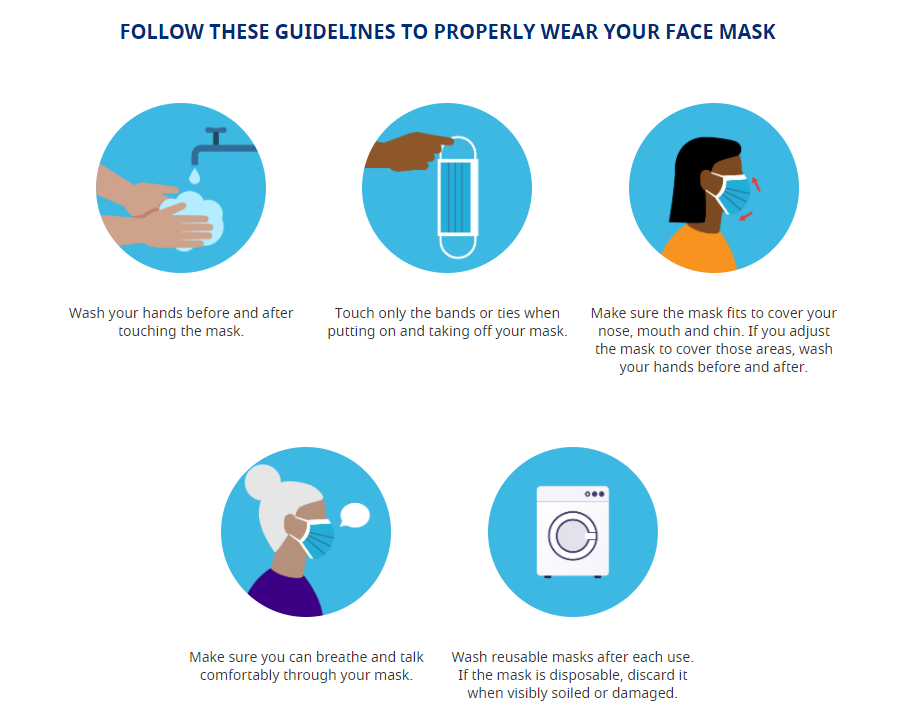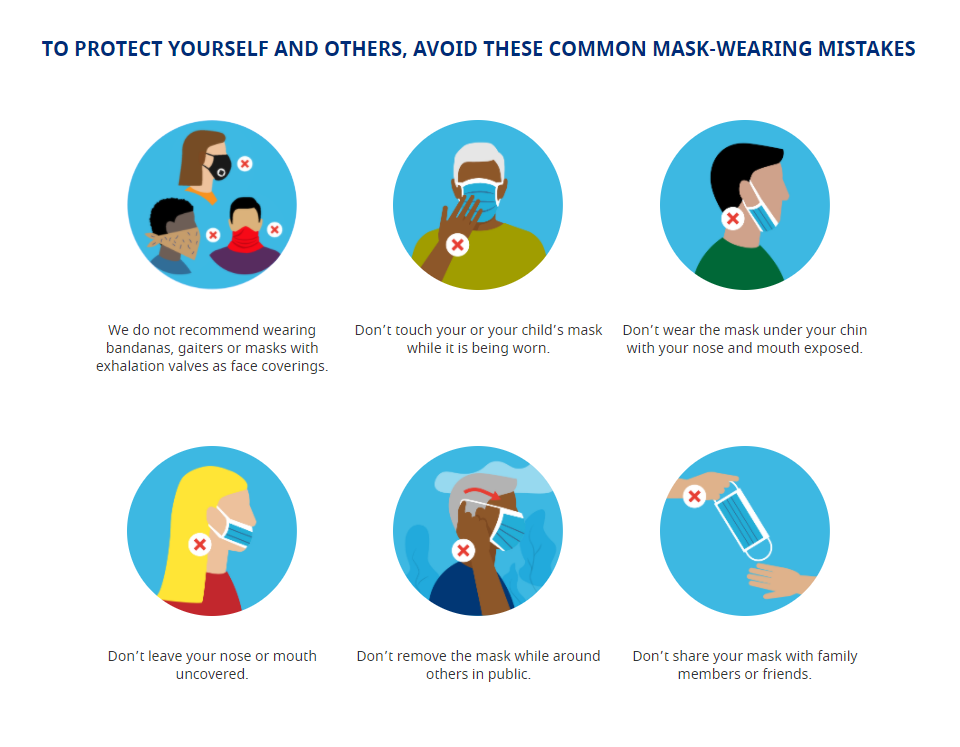
We have been wearing masks for a while - and have figured out how to solve some of the aggravations that come with it.
The Basic Do’s and Don’ts


Eyeglasses fogging up?
Here are some tips to prevent your face mask from fogging up your eyewear.
Fit your mask to your face
If your mask doesn’t fit your face well, warm air is likely to escape and fog up your lenses. When putting on your mask, make sure to pinch the top of the mask to fit the shape of your nose. If your mask allows it, tighten the sides as well for a good fit.
Use medical or athletic tape to close the gap between the bridge of your nose and the top of your mask. If you don’t have tape, try an adhesive bandage.
Wipe your lenses before wearing them
An anti-fogging solution or even gently washing your lenses with soap and water before wearing them may help. This will keep water droplets from building up and fogging your lenses.
Adjust your glasses
Pushing your glasses forward on your nose will allow more air to circulate and keep your breath from fogging up your vision.
Rest your glasses over your face mask
Try pulling your mask up over your nose and rest your glasses on top of it. This will block the air from escaping and prevent fogging. If you try this, make sure your mask still fits properly over your face. Your nose and mouth should be completely covered.
Skin Irritation?
Some mask materials are kinder to the skin than others. The most protective masks are made of cotton or polyester blends, and these are gentle on the skin. A smooth-texture material will cut down on friction that can chafe and irritate the lower part of the face. Synthetic fabrics are an issue for some people.
Are you allergic to your face mask? Some commercial face masks are pre-treated with formaldehyde to disinfect them. If you’re allergic to that chemical, those masks could spark a breakout. Likewise, laundering washable masks with heavily scented detergents or softeners can cause itching, redness or rashes. Choosing a natural fiber-cloth mask and unscented laundry products can help prevent skin irritation or sensitivity.
Make sure your mask fits properly. Ensure that it fits your face and covers both your nose and your mouth. To help avoid chafing, your face mask shouldn’t gap excessively. But it shouldn’t be too tight either.
Masks with ties can be easier to adjust to the size and shape of your face. A bendable piece across the bridge of the nose can help ensure a good fit and keep the mask from fogging up your glasses, but it can also chafe the nose if it is not cushioned by fabric.
Keep your mask(s) clean. Oil, mucus, saliva and sweat can get on your face mask wherever it touches your face. Wash your mask with gentle, nonirritating soap after each use and dry it in the dryer. Store your fresh masks in a bag to keep them clean.
What about guys with facial hair? Facial hair has the same microbial environment as the rest of the face. In order for face masks to be effective, they should cover men’s beards.
References
- https://www.hopkinsmedicine.org/health/conditions-and-diseases/coronavirus/proper-mask-wearing-coronavirus-prevention-infographic
- https://www.aao.org/eye-health/tips-prevention/face-mask-foggy-glasses-coronavirus-covid
- https://www.hopkinsmedicine.org/health/conditions-and-diseases/coronavirus/coronavirus-tips-to-avoid-maskne-skin-irritation
- https://www.washingtonpost.com/lifestyle/2020/09/30/mask-guidelines-covid-faq/